This story begins with an afternoon drive through the local countryside accompanied by my spouse. The air was lovely and warm. The skies were clear. The weather was what we expect for late June in Ohio after enduring six months of gray flannel skies that accompany our winters and much of the spring. As we drove, I noticed a small sign announcing a sale on a side street in an upscale housing development. I turned into the side street too quickly to see whether it was a garage sale or an estate sale. There is a difference.
Local garage sales are overseen by homeowners and typically include broken tools, outgrown children’s clothes and outdated electronics. In contrast, estate sales are professionally orchestrated and offer a wider array of goods that represent the accumulated objects of a life of consuming, albeit at much higher prices. Estate sale professionals are paid to maximize profits for the client. They know how to differentiate diamonds in the rough from junk. They use the Internet to check prices. They advertise potentially valuable items to draw well-heeled collectors. Bargains are rare at estate sales. I try to avoid them except on the last day when steep discounts are applied to move merchandise.
This particular sale was a hybrid. Not quite a garage sale, not quite an estate sale. The homeowner ran the sale but the items on offer were mostly the belongings of the homeowner’s father. This opens the door to interesting items at more modest and realistic prices. Diamonds in the rough so to speak.
Much of the items dated back to the 1950’s, 60’s and 70’s. First I noticed memorabilia from local corporate titan firms like Firestone, Timken and B.F. Goodrich. Interesting to the right buyer, but not me. Then I noticed an ancient tripod, a few old Polaroid cameras and several flashguns with assorted bulbs. The recently passed on father was a photographer. As I continued my search, I came across a beat up brown leather Eveready case. Inside was a surprisingly dense little camera with D.R.P Wetzler engraved on top. I didn’t recognize it but figured it would look good on my office shelf.
After adding the camera to a small group of other items I was interested in purchasing, the seller and I agreed upon a price; $35 for the lot. As we left, my spouse indicated her surprise that I would pay so much for an old camera and a pair of torn lined leather gloves. I suggested that the gloves could be mended and that the camera might be worth more than most old cameras. I also justified my purchase by explaining that the lens could be refitted to my digital camera allowing me to have some inexpensive fun.
Upon closer examination and a little online research, I discovered that I had indeed made a good purchase. My $35 expenditure snagged me a Leica body and an Elmar 5cm, F3.5 lens. Both are in very good cosmetic condition.
The Elmar has red letters and the serial number suggests a 1952 date of manufacture. The body has no self-timer but includes the slow speed dial.
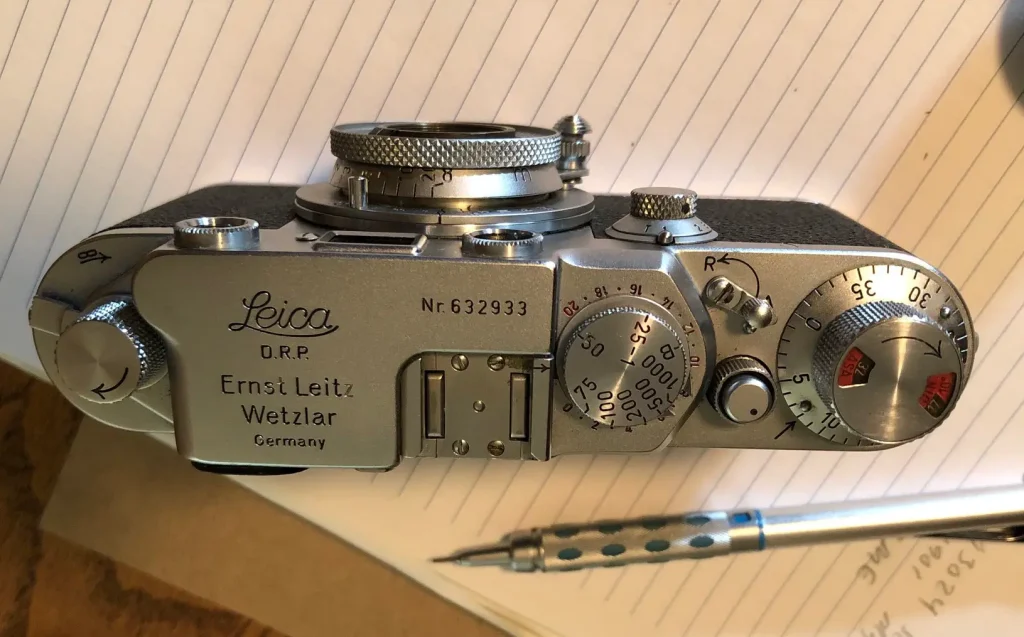
The body serial number corresponds to a production date of 1953. The red markings on the flash synch leads to a designation of the camera as a Leica IIIf-Red Dial. This is among the most common of the types, lowering the collector value but making parts easy to find and repairs simpler.
The Elmar’s glass was clear and free from deep scratches. The aperture and focus both work. Internet value for the lens alone is at least five times my initial investment of $35.
Compared to the lens, time had been less kind to the IIIf. The rangefinder was a little dim and the shutter was sluggish. A more careful inspection revealed that the first shutter curtain was badly wrinkled. The second one was sluggish. In short, the camera would not work without a repair that might reach ten times the purchase price. I decided it would be unwise to invest in a repair of the body unless I could first confirm that the lens was healthy. The best way to do this is to mount the lens on a digital camera and take some photos. I ordered a Leica M39 to micro four-thirds adapter and waited for the delivery truck.
Three days later, I had the Elmar mounted on my Olympus camera and put it through its paces. Focusing in magnified view, I could readily see (even on a crop sensor camera) that the lens displays some corner softness wide open but it sharpens right nicely by an aperture of 5.6. Colors were accurate. I saw no serious aberrations or even color fringing. The lens is a keeper.
Here are some images I took with the Elmar on my Olympus EM1x micro-four thirds camera. Note the crop factor (2x) inherent with the smaller format only uses the central half of the projected image circle helping the Elmar shine. Below is a snap shot of our town hall. It was originally a protestant church built in 1852. Now it is used for craft fairs, holiday concerts and parties. We vote in the basement on election days. I opted for B&W to add some nostalgia:
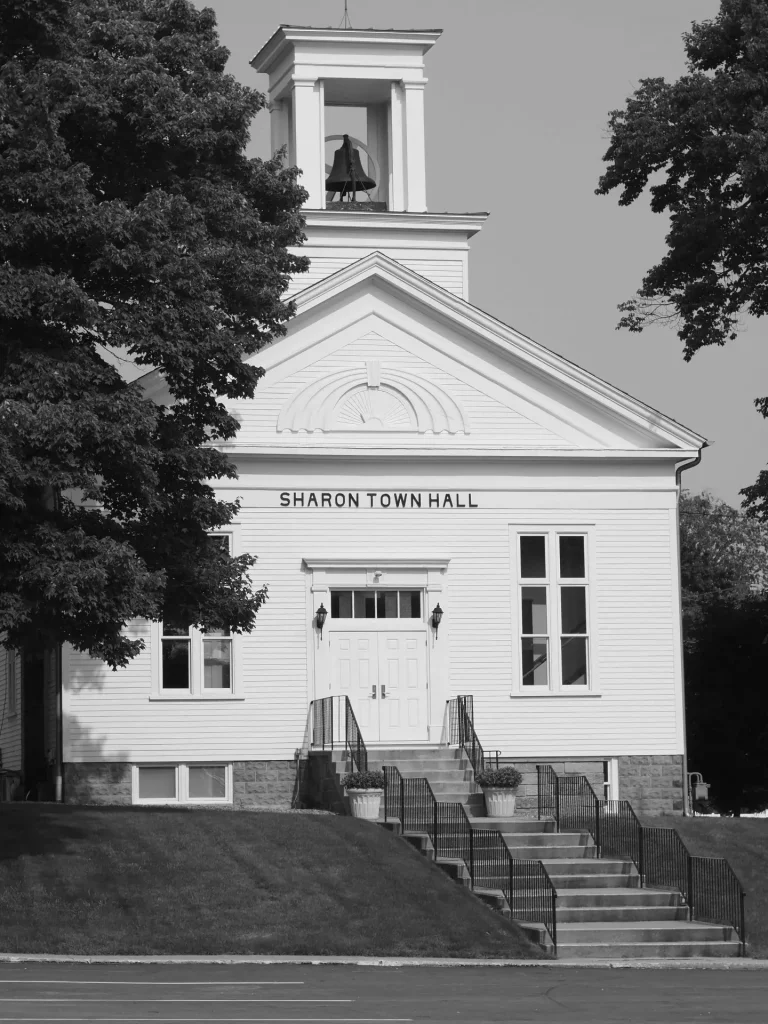
The following image is our town’s post office. It was originally a bank building built in the 1920’s. Since the 1950’s it has been the post office. Shot at F8 in good light, the old Elmar turns in a fine image:
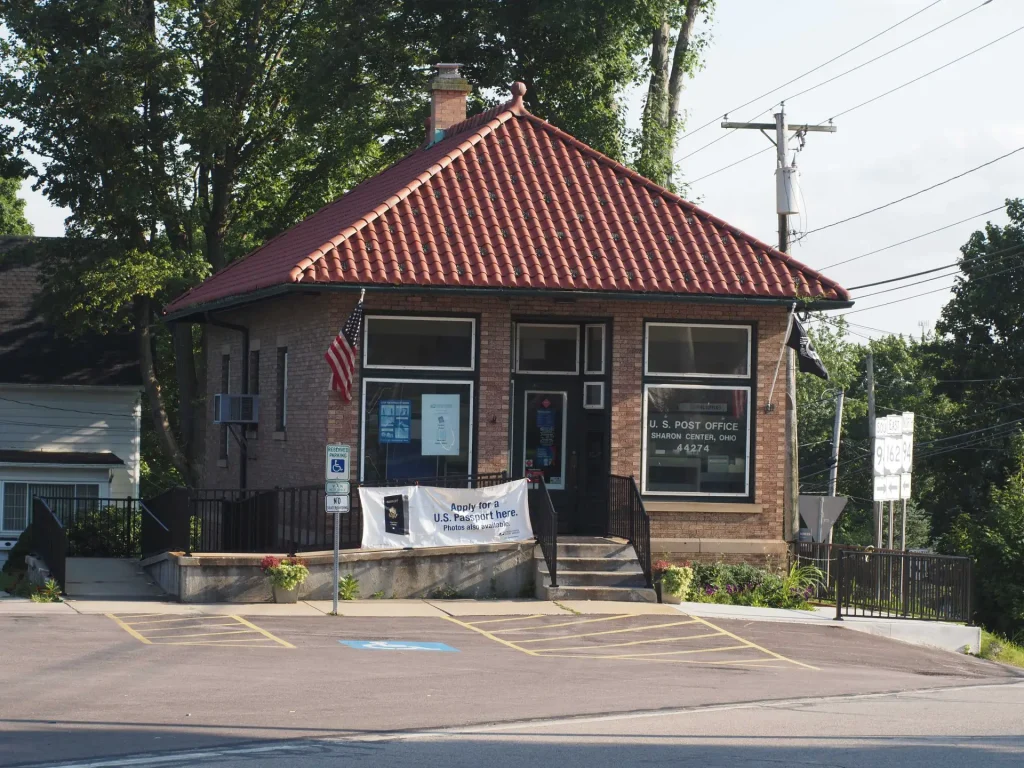
Over the next few weeks, I convinced myself, and maybe even my spouse, that it was sensible to send the camera out for repair then shoot a few rolls of film for nostalgia. If I discovered that reliving my film days lacked the enjoyment I had hoped, I could always sell the Leica kit and recoup my investment, maybe even coming out a few dollars ahead. Also to be honest, I had become a bit smitten with the tactile feel and heft of the Leica IIIf. Numerous articles extolled the virtues of this “last of the Barnack” cameras and I just had to see firsthand if it lived up to the legend.
I discovered a few highly regarded repair specialists in the US with a track record of resurrecting Barnack Leicas. One was noted as preferring to work on later model Leica M’s. The other had repair times measured in months, not days or weeks as is typical for modern cameras. Since I was in no hurry, I boxed up the camera and sent it to Mr. Youxin Ye in Boston. That was back in early July.
Over the summer, I somehow convinced myself that it would be fun to visit more local sales to collect supplies for film developing. This way I could really immerse myself into analogue photography and, in a sense, relive a bit of my youth. With so many people of a certain vintage transitioning to the hereafter, I figured finding old darkroom equipment would be easy. I was wrong. The entire summer passed with no luck.
I was about ready to order a developing kit online when I spotted an estate sale advertisement that included a mention of photographic items. An hour’s drive and $5 later I was the proud owner of a slightly used 1960’s vintage GAF developing tank complete with instructions and a handy agitator-thermometer accessory. Combined with some locally sourced Ilford 3 processing kits and four rolls of Summer-rated (ISO 125) Santa Rae film, I eagerly anticipated the return of my Leica IIIf.
When I sent my camera for repair, Mr. Ye predicted a completion date in the late summer or early fall. Following his initial acknowledgement of receipt, there was total radio silence. In October, just as I began to wonder about Mr. Ye’s progress, I received an email that the camera was ready. After a simple Paypal transfer, my Leica was on its way home.
Following the camera’s arrival, I spent a few evenings reading the manual and operating the controls. It had been a few decades since I had used a fully manual camera. The last manual film camera I had used was a Kodak Retinette II. That was back in the early 1990’s and I was out of practice. Despite the passage of time, operating the Leica soon became second nature. At least this is what I had told myself. I was ready to load a roll of film and start snapping.
The weather cooperated. Indian summer had descended upon us bringing day after day of sunny blue skies, warm temperatures and light breezes. I decided to visit several of my regular photographic haunts to exercise the Leica. I would photograph some of my favorite subjects with the Leica and compare the results to my digital images. Just for fun. In some cases, I even brought along my old Fuji X20 (12 megapixel) point and shoot to use for taking exposure readings and comparative photos. It only took me a week to burn through my initial roll of Santa Rae. Next step, processing.
Developing my first roll of film in over forty years was a bit of a challenge. I struggled in the dark of my basement to load the thin Santa Rae film onto the vintage GAF plastic ratchet-action tank spool. It took a few tries and resulted in more than a few buckled frames. I don’t recall ever having film buckling in my youth using Kodak plus plan and tri-x. Later, I compared some of my old Kodak negatives to the Santa Rae. The old Kodak film is indeed thicker and includes frame numbers alongside the sprockets. The Santa Rae film is of thinner, more flexible stock and has no edge markings of any kind.
The instructions for the developing tank called for striking the tank on a hard surface after filling to drive off air bubbles. Concerned that over agitation might lead to more bubbles, I suspect I was a little too gentle. The developed film included some half-crescent shaped artifacts from the buckling and some edges with underdeveloped dark striations. Such flaws were, however, relatively few. Out of 40 exposures, more than 30 of them were just fine.
Here are a few from my very first roll starting once again with our town hall.

And here’s the post office:
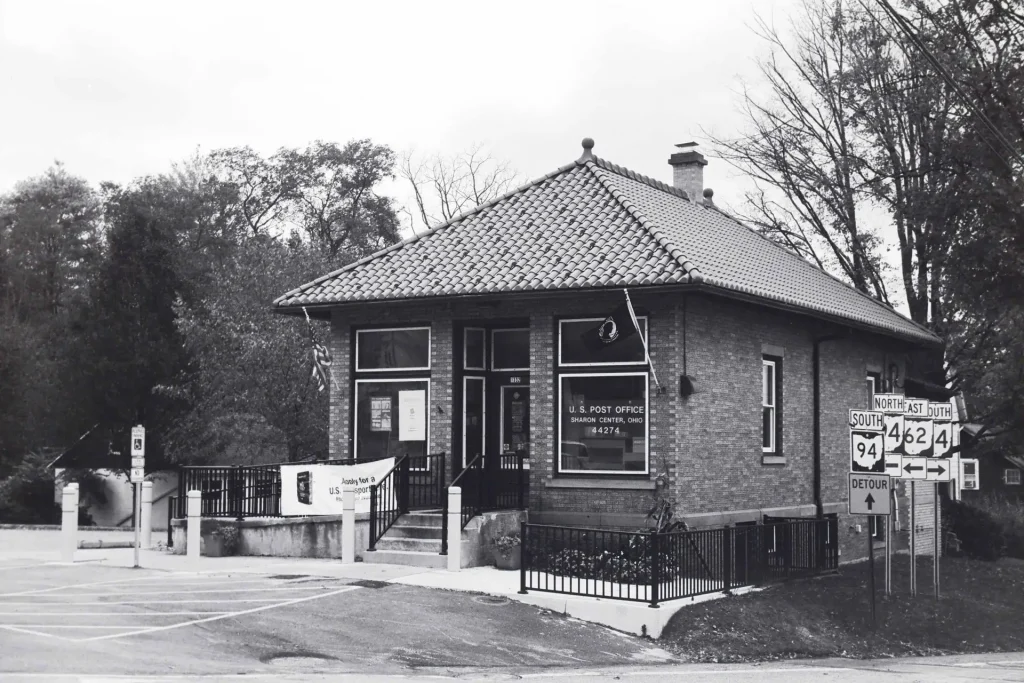
On Halloween, my friends and I dress up in costume and hand out candy to local children around the town circle. Bob and Nick, dressed up like mad scientists, made good subject matter to test the Elmar more or less wide open (F4.0):
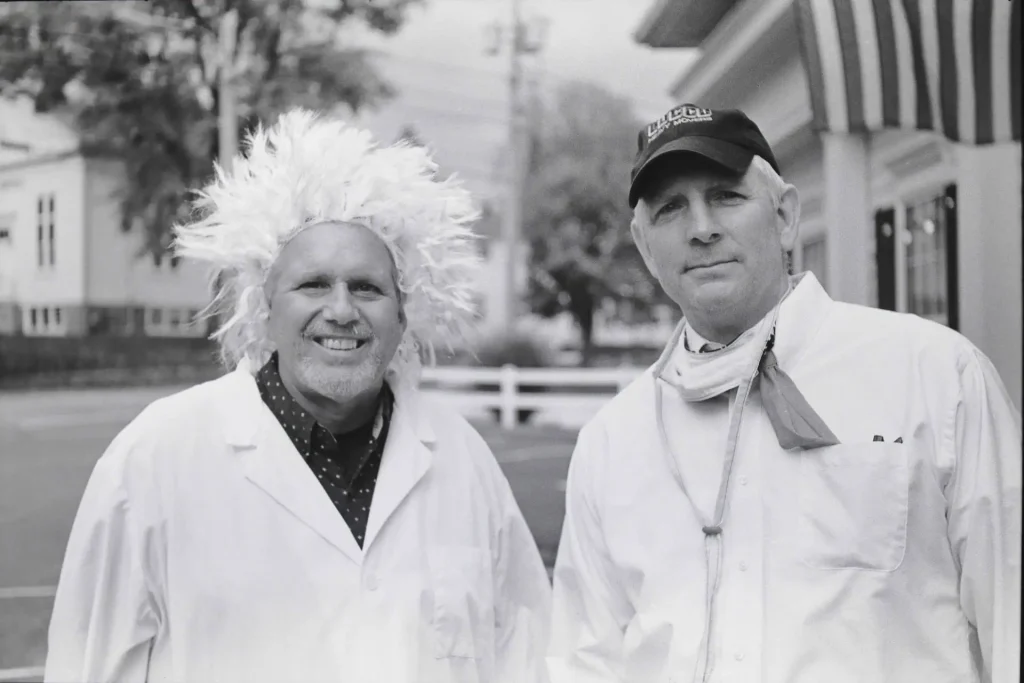
The Elmar shines as a landscape lens too:
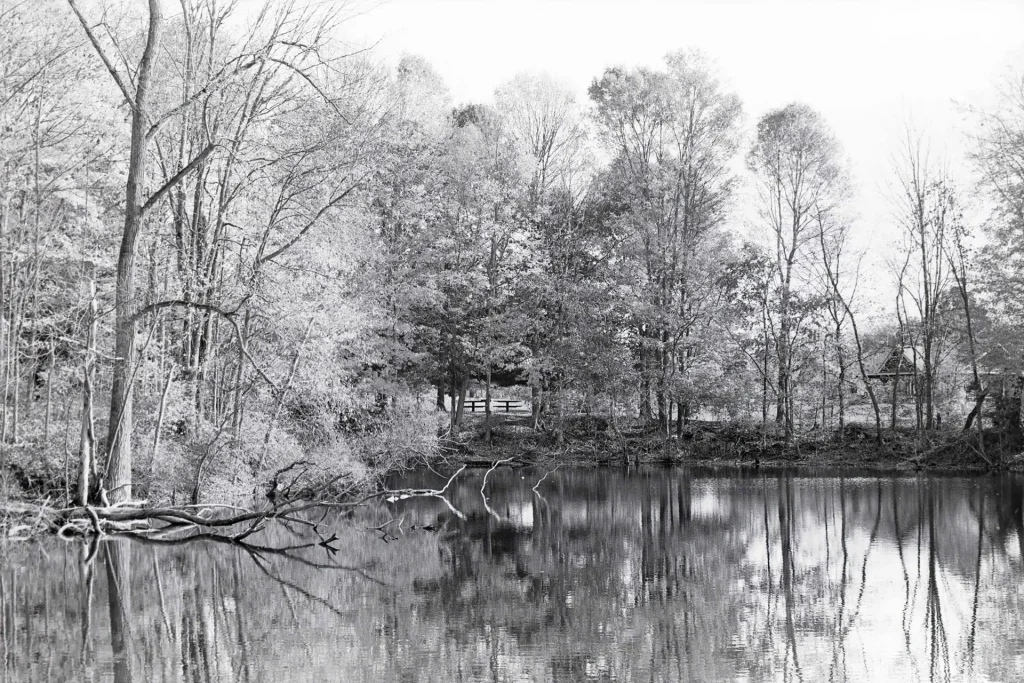
I like the overall rendering and micro-contrast. This is a full frame image (no cropping) and the edges are plenty sharp.
An interesting comparison is shown below. The subject is the pavilion at a local park, simultaneously captured with a Fuji digital and the Leica IIIf. The right image was taken with my digital Fuji X20 point and shoot, set at 50mm (equivalent). It has about ten megapixels of data. The left image is the un-cropped frame taken with the Leica IIIf and the Elmar. Digital captures the cloud details but the film really delivers and I find the results quite comparable.
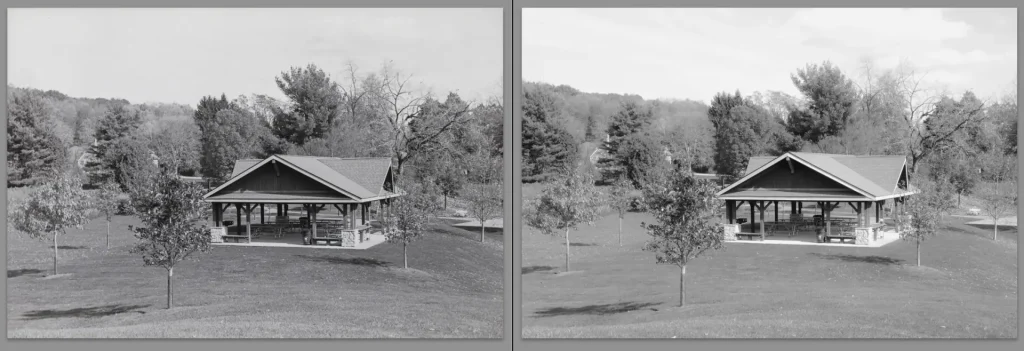
With my second roll I purposefully set out to photograph subjects with more bold lines and details. I was interested to see how the Leica IIIf and Elmar would capture more striking scenes. When I finished shooting the roll I again noticed that I captured 40 images, not the 36 indicated on the film canister. Maybe this can be attributed to the thin film stock. More likely it is because the film supplier knows that the first few frames suffer from light damage so some extras are wound into each cartridge. I also decided to increase tank agitation during development to reduce the development flaws I observed on the first roll.
The resulting film showed improved developing results. I was gentler in spooling the film and had no buckling on the tank spool. The increased agitation minimized inadequate developing on the film edges. I did notice that a larger number of the images were underexposed, especially those of subjects that tended darker, like the black horse and buggy I came across in our local Amish community.
Here are the images from my second roll:
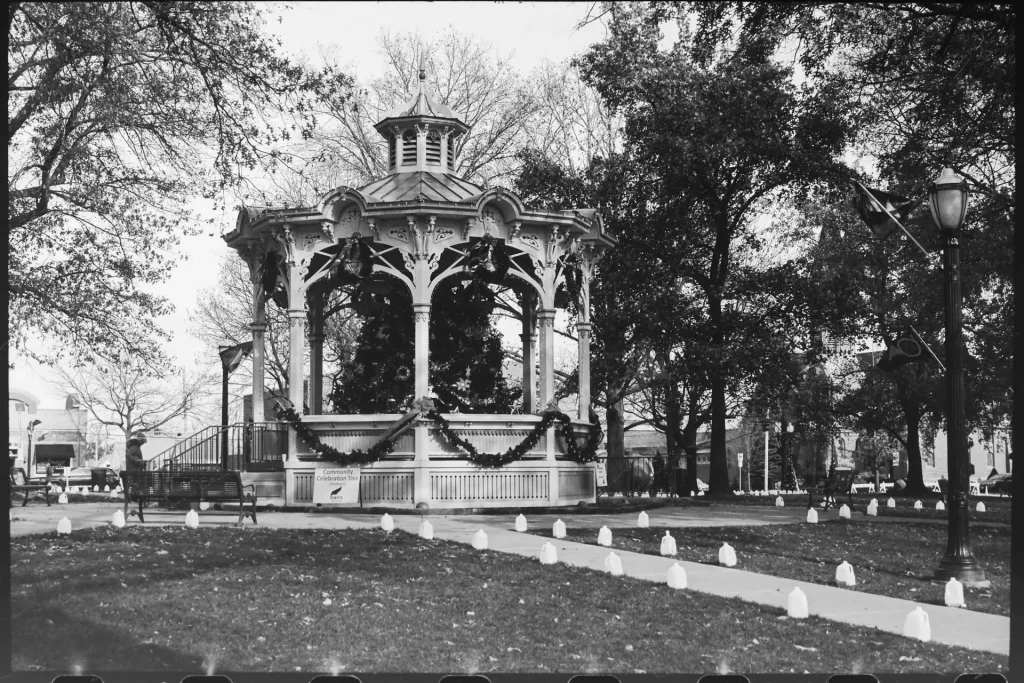
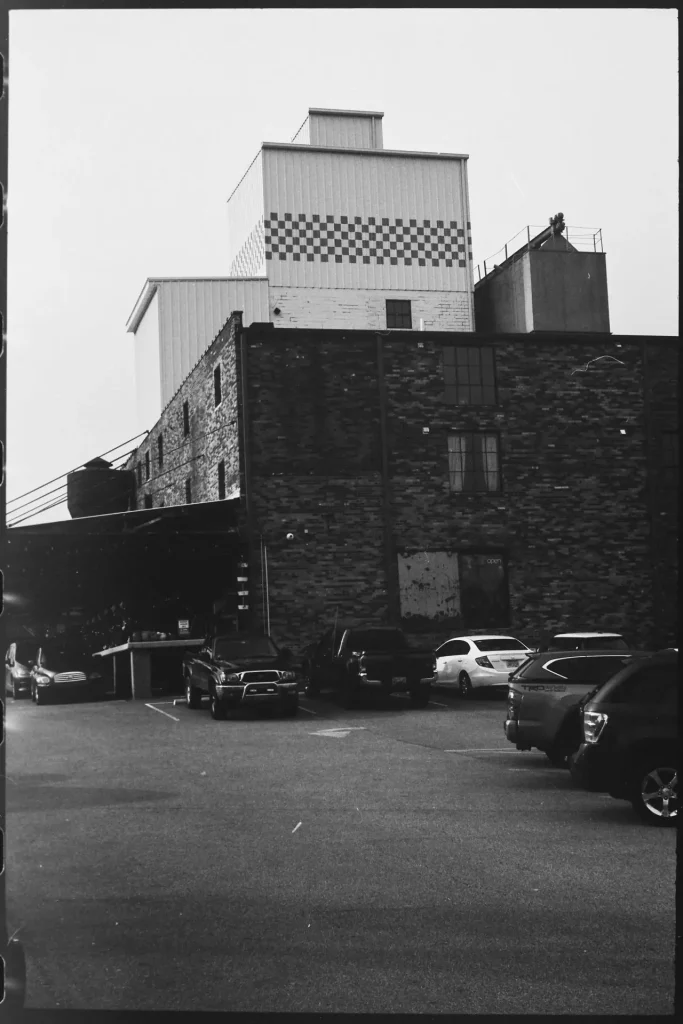
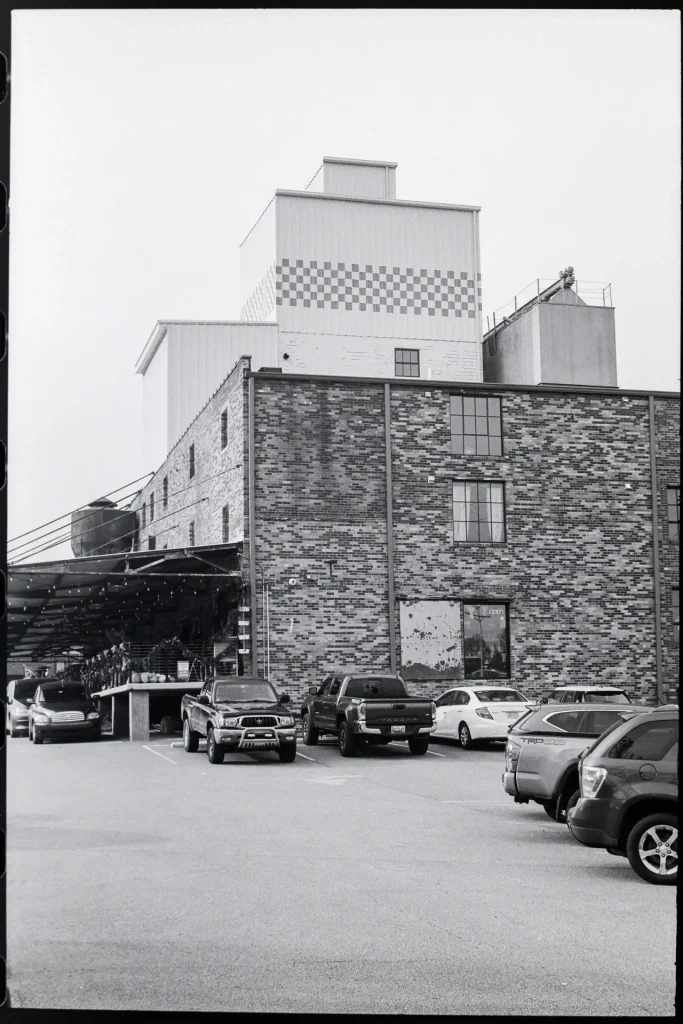
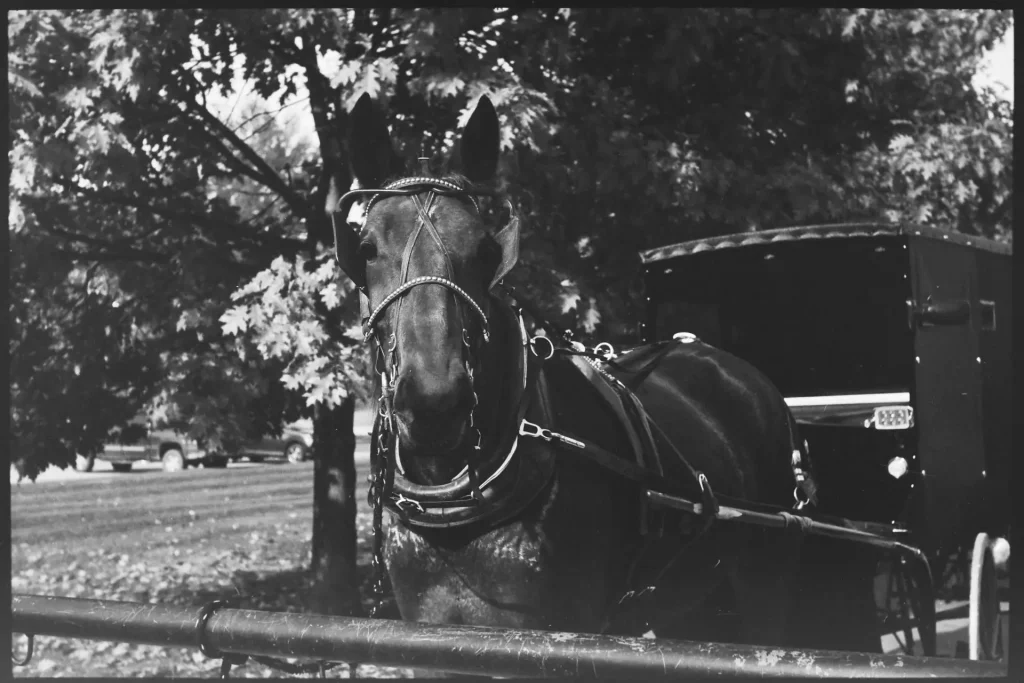
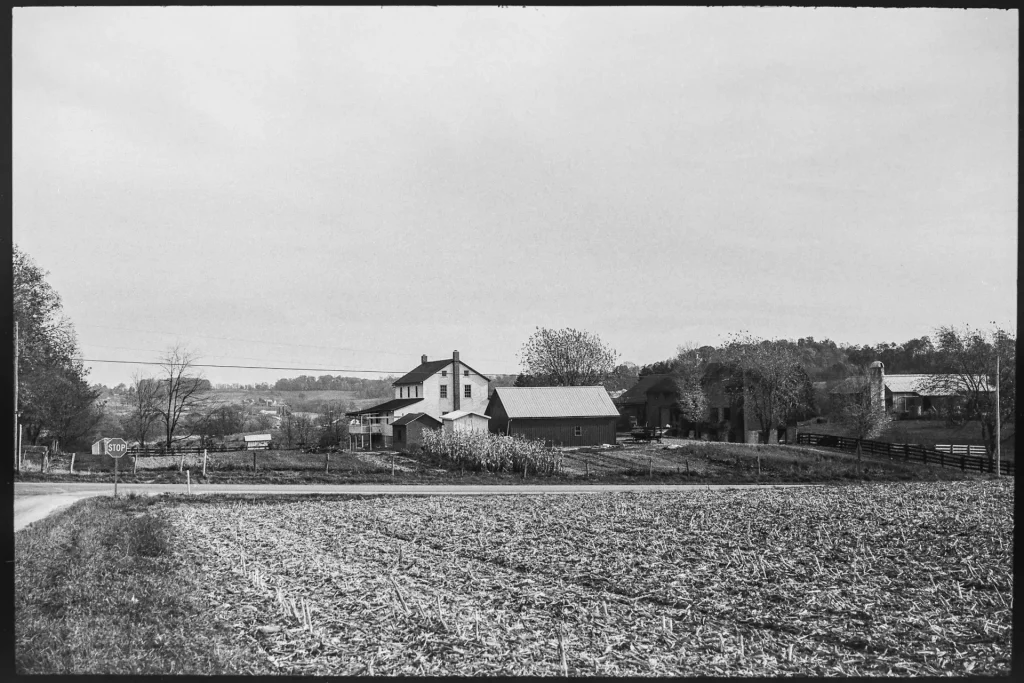
When the subject is bold and the lighting lends itself to good exposure, the results are clean and have plenty of impact. Here’s a shot of our library building. Do you notice the workers attending to the roof ahead of winter?
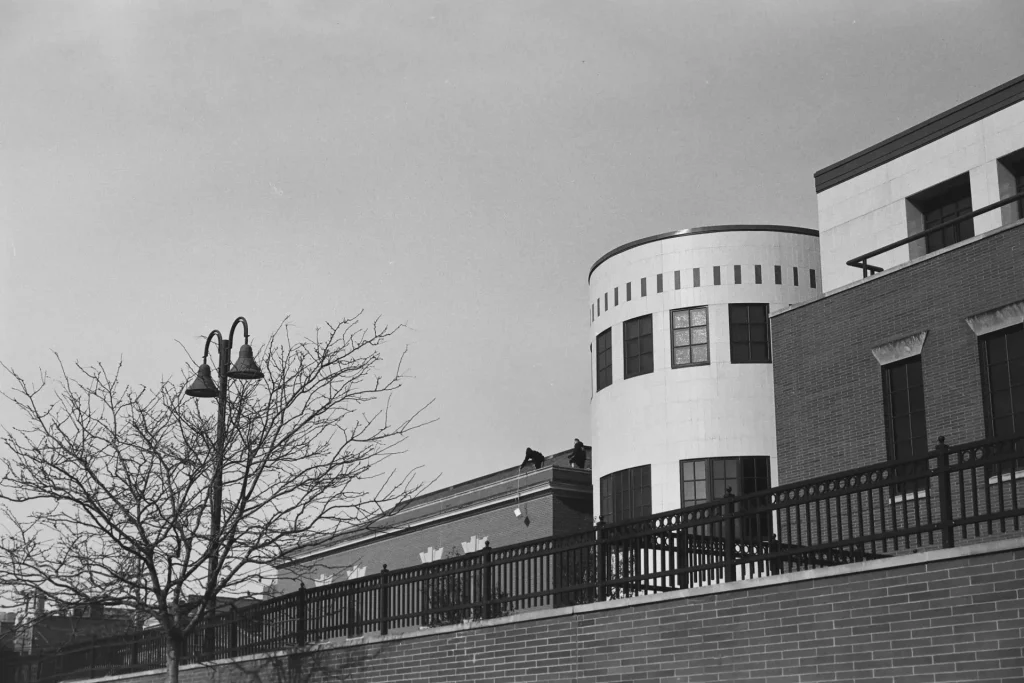
The image above surprised me. It is bold, clean and full of both contrast and fine details, all taken with a 70 year-old camera. Sure, I could have taken this with my digital camera or even my cell phone. But there is something special and engaging to have captured this moment with my resurrected Barnack.
My adventure back into film began with an afternoon drive and a happenstance stop at a local garage/estate sale. Through this little camera, I have relived a part of my childhood in which I first experienced the magic of seeing images captured on negative film emerging, wet and shiny from the developing tank.
The purely mechanical Leica slows me down. I think this is good. Before capturing a photo, I have to remember to cock the shutter by winding the camera. Then I must visualize the image, estimate exposure, set the aperture and shutter speed, focus using the small side viewfinder and then compose with the main finder window. Then I have to be patient. So do my subjects.
There is no LCD on the back of the camera to immediately display the result. I cannot even develop the film until I finish the roll. Unlike digital, film has a real per unit cost. If I am shooting a 36-exposure roll I have to wait until the roll is shot before I can see any results. Once the roll is complete, developing the film and then digitizing the results takes me about three hours. Hardly the immediate results we have become accustomed to in the digital age.
Mostly I have learned that I have to flip my perspective upside-down when shooting film. Rather than tending to underexpose as I do with digital, I must lean into overexposure to ensure a negative with substance and depth. I have to spend more time up front pre-visualizing an image and looking for lines, contrast and depth. Film is a commitment. One cannot snap a shot, look at the result, make an adjustment and retake the image. More time is involved in the planning process, the developing process and then in massaging the final image.
None of these changes required for film is all that difficult. In fact, it is fun and rewarding. The problem may be to remember to flip my perspective back to digital so that I can maximize every image I make regardless of the medium I use, film or digital.
Stay Tuned.
Share this post:
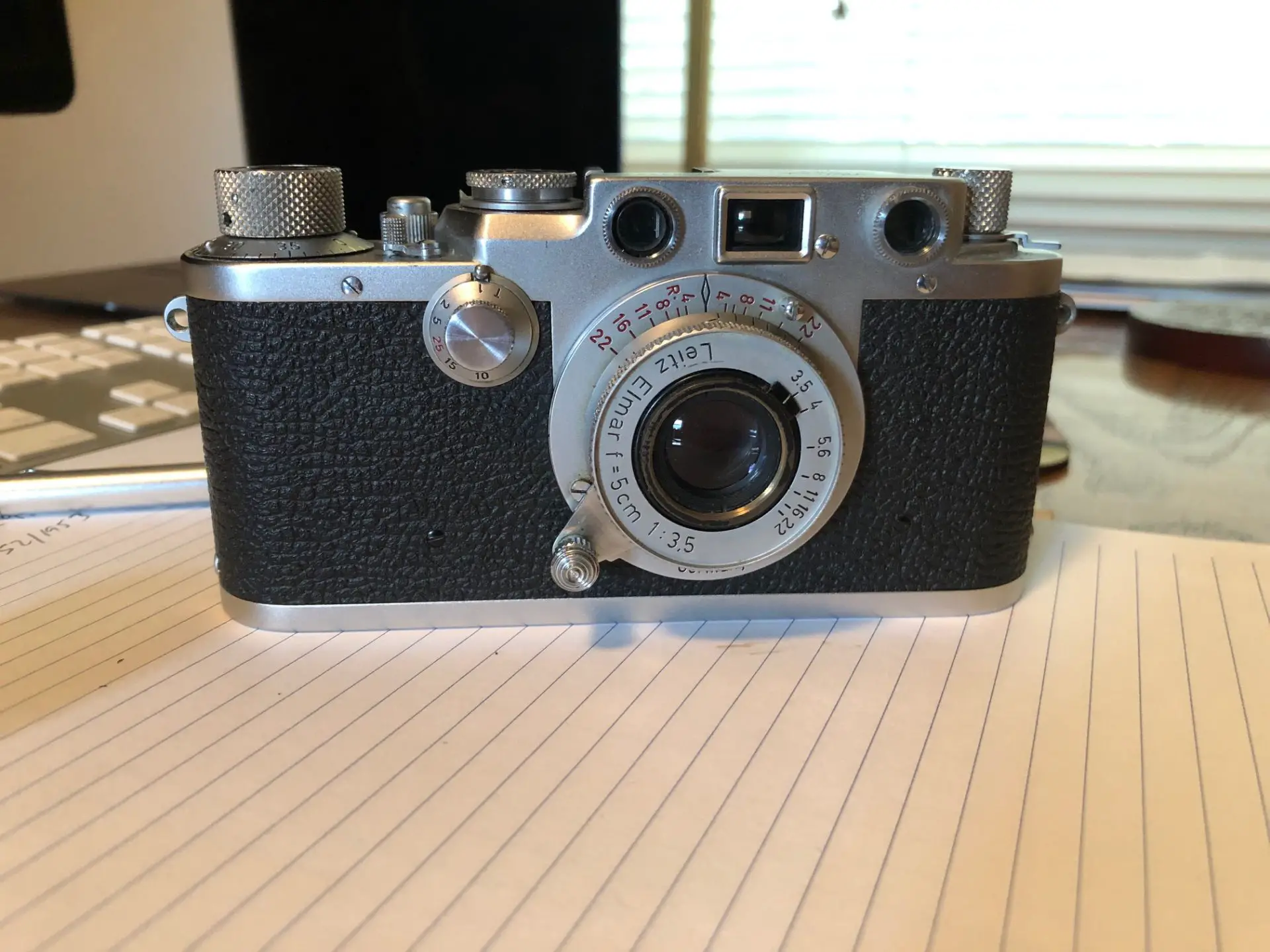








Comments
Safiyyah on Breaking Digital Habits and Relearning Film With a Leica IIIf – By Christopher DellaCorte
Comment posted: 14/12/2021
Comment posted: 14/12/2021
Neal Wellons on Breaking Digital Habits and Relearning Film With a Leica IIIf – By Christopher DellaCorte
Comment posted: 14/12/2021
I used thin and thick based films and definitely the thick based ones are easier to work with. The dots you pointed out on the gazebo photo might be due to light piping, especially if it was one of the first photos on the roll. I shoot mostly Ilford FP4 and HP5 for B&W and Kodak Ultramax for color and can recommend them as not too expensive but still great films.
I shot digital for years but film has converted me back to analog and I enjoy it so much more. The Barnack cameras would not fit everyone's need but your types of subjects are similar to mine and that type of camera is great for no hurries photography.
Thanks for your work in putting this great story together. I'll be passing it around.
Comment posted: 14/12/2021
Christopher DellaCorte on Breaking Digital Habits and Relearning Film With a Leica IIIf – By Christopher DellaCorte
Comment posted: 14/12/2021
Many thanks to one of our readers (Stephen) who pointed out that I inadvertently uploaded the incorrect photo for figure 5. I uploaded the digital image that duplicates the Town Hall image (the third one in the article). I have just corrected my error and uploaded the right image.
CDC
Kodachromeguy on Breaking Digital Habits and Relearning Film With a Leica IIIf – By Christopher DellaCorte
Comment posted: 14/12/2021
Paul Trantow on Breaking Digital Habits and Relearning Film With a Leica IIIf – By Christopher DellaCorte
Comment posted: 14/12/2021
Comment posted: 14/12/2021
Arthur Gottschalk on Breaking Digital Habits and Relearning Film With a Leica IIIf – By Christopher DellaCorte
Comment posted: 14/12/2021
David Hill on Breaking Digital Habits and Relearning Film With a Leica IIIf – By Christopher DellaCorte
Comment posted: 14/12/2021
Comment posted: 14/12/2021
Agata Urbaniak on Breaking Digital Habits and Relearning Film With a Leica IIIf – By Christopher DellaCorte
Comment posted: 14/12/2021
Dan Castelli on Breaking Digital Habits and Relearning Film With a Leica IIIf – By Christopher DellaCorte
Comment posted: 14/12/2021
I found a M2 residing on the dusty back shelf of an antique store in VT 25 years ago. I bought it, then sent it to Leica in Germany. It was returned in ‘like new’ condition with a note that it should be good for another 30 years. It will be passed onto my daughter when I die. But, I’m sure not ready for that.
Kenneth Rowin on Breaking Digital Habits and Relearning Film With a Leica IIIf – By Christopher DellaCorte
Comment posted: 15/12/2021
Comment posted: 15/12/2021
Tim Bradshaw on Breaking Digital Habits and Relearning Film With a Leica IIIf – By Christopher DellaCorte
Comment posted: 15/12/2021
For what it's worth my guess is that the sprocket hole marks may well be due to inadequate agitation (the vertical streaks you described almost certainly are): the term for this is 'bromide drag' and it's where products of the development are not removed fast enough from the surface of the emulsion, which then retard the development locally. I agitate by inversion (you need a tank that can be inverted!) and I agitate continuously for a minute with a tap to release bubbles at the end (probably too late, really) and then ten seconds a minute thereafter, which is reasonably conventional.
But they might be stress marks where the camera has deformed the film locally as it winds it. This can definitely be an issue with films with a very thin base, or if the film path in the camera is sticky somehow. Solution to that if the film path is fine (likely it is as the camera has been looked at) is either to wind more gently (given this is a Barnack Leica that's likely not a problem) or to use a film with a thicker base.
Which brings me to what I wanted to ask: I wonder what these 'Santa Rae' films are? It seems unlikely they are coating and spooling their own stock, so it's probably someone else's, but I winder who?
Comment posted: 15/12/2021
Ian Hamilton on Breaking Digital Habits and Relearning Film With a Leica IIIf – By Christopher DellaCorte
Comment posted: 21/08/2022
my first Barnack, a 1933 iii, to keep my M4 company. Ran a test roll through it and found small bits of debris on a few of the frames, so I need to clean up the film compartment a bit until I can send
It for a CLA (£200 VAT in the UK).
Having started on film 40 years ago and moving on to digital I agree that the mindset of exposing film is a change, but I’m looking forward to the slow process of taking time when shooting (even more so than with the M4).
Enjoy.